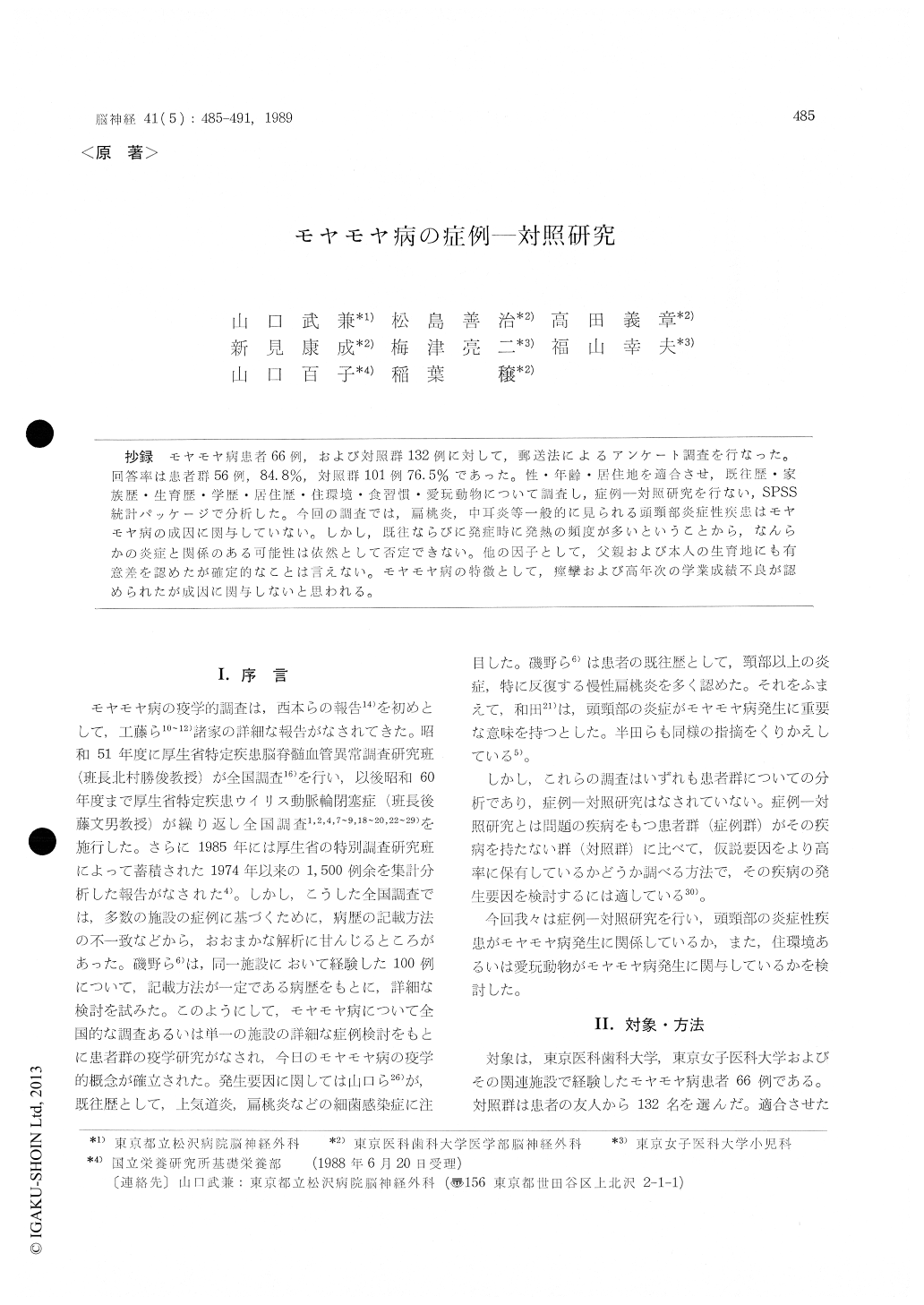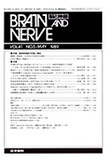Japanese
English
- 有料閲覧
- Abstract 文献概要
- 1ページ目 Look Inside
抄録 モヤモヤ病患者66例,および対照群132例に対して,郵送法によるアンケート調査を行なった。回答率は患者群56例,84.8%,対照群101例76.5%であった。性・年齢・居住地を適合させ,既往歴・家族歴・生育歴・学歴・居住歴・住環境・食習慣・愛玩動物について調査し,症例—対照研究を行ない,SPSS統計パッケージで分析した。今回の調査では,扁桃炎,中耳炎等一般的に見られる頭頸部炎症性疾患はモヤモヤ病の成因に関与していない。しかし,既往ならびに発症時に発熱の頻度が多いということから,なんらかの炎症と関係のある可能性は依然として否定できない。他の因子として,父親および本人の生育地にも有意差を認めたが確定的なことは言えない。モヤモヤ病の特徴として,痙攣および高年次の学業成績不良が認められたが成因に関与しないと思われる。
The cause of Moyamoya disease is still un-known. We made a research about the factors close-ly related to Moyamoya disease through a case-control study. The number of cases studied was 66. Controls were selected from among patients' friends, matched as to sex, age and residential area. Questionnaires were sent to the cases and therespective controls by mail. The questions were about past history, developmental history, school records, habitual factors, dietary habits and pets. The first symptoms and age at onset were also surveyed in the cases. The response rate was 84.8% (56 cases) of the cases and 76. 5% (101 cases) out of the 132 controls. There was no significant difference in the prevalence of tonsillitis, con-juntivitis, otitis media, and bronchitis. Odds ratio of fever of unknown origin is 2 793 and X2 is 7. 213. Diseases whose odds ratio was over 1 were herpes, appendicitis, bronchisis, asthma, anemia, dental caries, head injury and drug allergy. But all of them were not significantly prevalent. Odds ratios of school records were 4-9 and X2 were 4-17 from elementary to junior high school. Odds ratio of western dishes was 2. 709 and X2 was 5. 189. There was no significant difference as to pets kept.
We could not find overt relationships between Moyamoya disease and diseases of head and neck like tonsillitis.

Copyright © 1989, Igaku-Shoin Ltd. All rights reserved.


